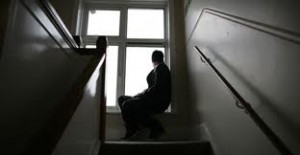Sexually Exploited Girls in New York Find Safe Harbor
 NEW YORK –There are advantages and difficulties, including legal barriers, to converting prostitution charges into an opportunity to provide services to girls on the street. That was the conclusion of a panel of experts assembled at the 74th annual conference of the National Association of Juvenile and Family Court Judges recently.
NEW YORK –There are advantages and difficulties, including legal barriers, to converting prostitution charges into an opportunity to provide services to girls on the street. That was the conclusion of a panel of experts assembled at the 74th annual conference of the National Association of Juvenile and Family Court Judges recently.
“There is a conflict in our law,” suggested Judge Edwina Richardson-Mendelson, administrative judge of the city’s family courts, “How can we criminally prosecute kids for prostitution when the law says that they can’t legally consent to having sex?” she asked. “Every child arrested is a sexually exploited child.”
The Safe Harbor bill enacted in April 2010 creates a rebuttable presumption that a minor arrested for prostitution in New York is a “trafficked” person, allowing a diversion from delinquency court to a children’s services program.
But Judge Richardson-Mendelson pointed out the difficulties associated with the Safe Harbor Bill. “First,” she said, “it doesn’t apply to youth who have had a prior adjudication for prostitution, although they are the ones who need it most. Then, it’s difficult to handle uncooperative girls, those who don’t want to leave their ‘john,’ or who run away from placements. They may need the sanctions available in a prosecution for prostitution.”
Prosecuting the “johns” occurs infrequently in New York City and, according to the panel, usually doesn’t help the girls get services and is a frightening experience for them. New York City statistics for 2009 showed that there were only 626 arrests for prostitution, but nearly a third were for persons under age 21. Those 626 arrests for prostitution were twice as many as those for “patronizing” and the arrests carried with them a high conviction rate.
The exclusion of youth with a prior prostitution conviction from the benefits of the Safe Harbor Bill may be cured by the Vacating Conviction Bill passed in 2010 by the New York state Legislature. That allows victims of trafficking to vacate prior convictions for prostitution or related offenses.
One delinquency diversion program in New York is Girls Education and Mentoring Services (GEMS) run by Sara Hemmeter, of the city’s Administration for Children’s Services. The program currently works with 328 girls and young women, ages 12-24. Its core purpose is to provide crisis intervention, make referrals to other agencies for appropriate counseling or other services, and then to focus on stable housing, employment and education. GEMS is building relationships with local child welfare agencies and service providers.
Conference attendees saw the extent of the overall problem in a video clip from “Very Young Girls.” According to the film, domestic minor sex trafficking is a growing problem across the United States, in urban and rural areas, wherever girls are “at risk.” Girls enter the sex trade as young as 13 and some 80 percent have a history of child abuse. Girls of color, those raised in poverty and foster care were particularly vulnerable. (JJIE has written extensively about the issue in Georgia. Read here for a summation of the recently passed Georgia law.)
Research performed by Ric Curtis and Michael Rempel and reported in the article, “The Commercial Sexual Exploitation of Children in NYC,” (September, 2008) shows the extent of the problem in the New York. Among the key findings:
*At least 3,946 youth in New York City were victims of sexual exploitation
*48 percent were female, 45 percent male, 8 percent transgender
* Less than 10 percent born outside the United States
*75 percent of youth sometimes found customers on the street.
*Less than 10 percent said they could get help from their family
*60 percent reported being arrested at least once.
Newsfeed Archives
- November 2024
- October 2022
- June 2022
- May 2022
- February 2022
- January 2022
- December 2021
- November 2021
- August 2021
- July 2021
- May 2021
- April 2021
- February 2021
- January 2021
- December 2020
- October 2020
- August 2019
- August 2018
- May 2016
- September 2014
- April 2014
- December 2013
- April 2013
- August 2011
- July 2011
elsewhere
- An interview with Karlan Sick, Board President
- BOOKS CAN HELP INCARCERATED TEENS SUCCEED
- Books Through Bars
- Distribution to Underserved Communities Library Program
- Juvenile Justice Information Exchange
- Life Lessons Through Literacy for Incarcerated Teens
- Passages Academy Libraries
- Passages Academy Schools
- Read This
- What's Good in the Library?
- Women and Prison




